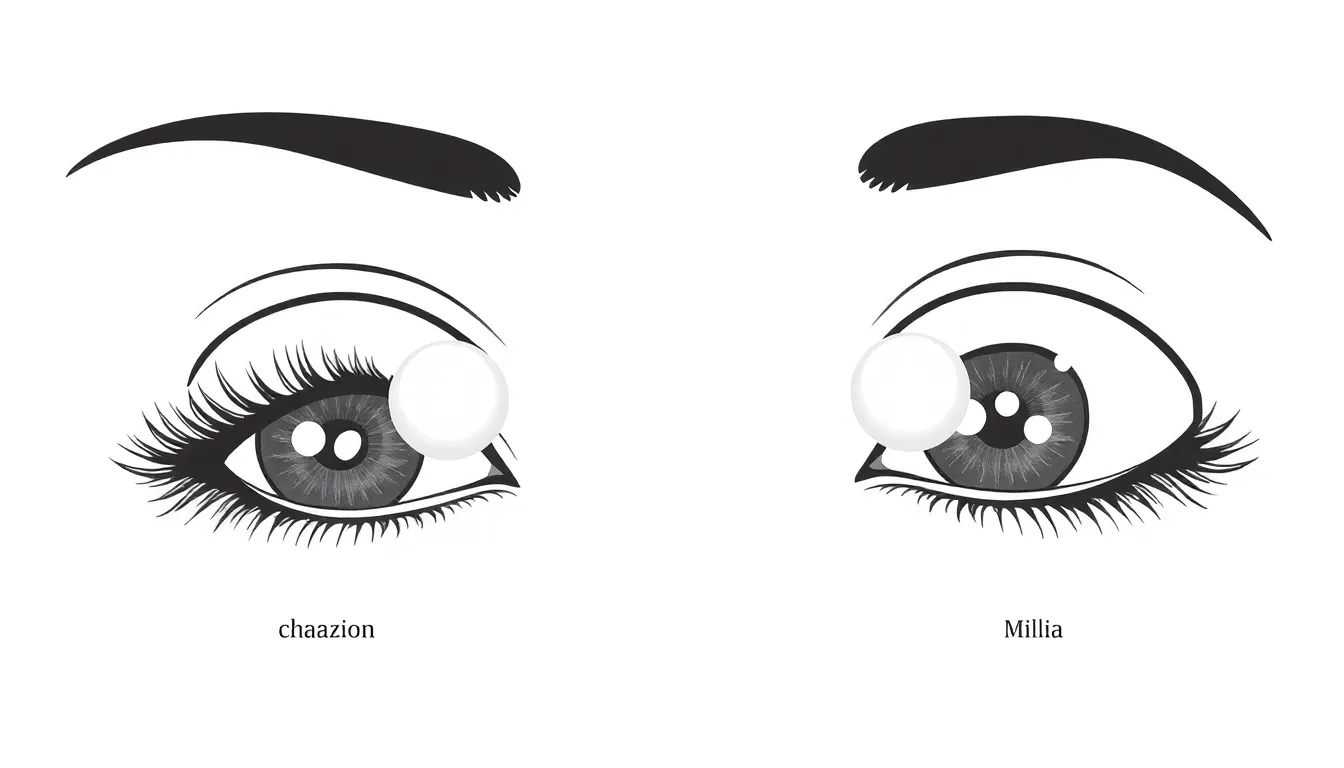Ever looked in the mirror and spotted a small white bump on your eyelid, wondering if it’s a new beauty trend or just your eye playing tricks? You’re not alone. Many people encounter these pesky little nuisances, often wondering if they should panic or just apply a little concealer and move on with their day.
Table of Contents
ToggleOverview Of Small White Bump On Eyelid
Small white bumps on the eyelid are fairly common and often harmless. These bumps can originate from various sources, including clogged oil glands, infections, or skin conditions. Many people may notice a tiny bump resembling a pimple or a cyst, usually without pain or discomfort.
Chalazia and milia rank among the most frequent types of bumps. Chalazia occur when oil glands become blocked, leading to swelling. Milia manifest as tiny white cysts that develop when keratin becomes trapped beneath the skin’s surface. Both types appear on the eyelid and are non-contagious.
Symptoms of small white bumps may include swelling or irritation in some instances. However, bumps often remain asymptomatic and don’t require treatment. In cases where the bump grows, changes in color, or causes discomfort, a healthcare professional should evaluate it promptly.
Treatment options vary based on the specific diagnosis. Warm compresses may alleviate discomfort and promote drainage for chalazia. In contrast, milia often resolve without intervention. However, skincare practices, like gentle exfoliation, may prevent future occurrences.
Prevention strategies can also play a role. Maintaining eyelid cleanliness and avoiding heavy makeup near the eyes helps minimize the risk of developing these bumps. Regular consultations with an eye care specialist ensure proper eyelid health and timely assessment of any changes.
Overall, while small white bumps on the eyelid might raise concerns, they typically do not indicate serious health issues. Awareness of their characteristics and potential causes empowers individuals to observe and seek medical advice if necessary.
Common Causes

Small white bumps on the eyelid can stem from various conditions. Understanding these causes helps individuals identify the nature of their bumps and seek appropriate care.
Chalazion
Chalazia form when oil glands in the eyelid become blocked. Blockages lead to swelling and sometimes discomfort. These bumps typically appear as firm, painless nodules. Many resolve naturally within weeks or months but may require treatment if persistent. Warm compresses often provide relief and can help reduce inflammation. Persistent chalazia may need medical intervention for drainage.
Xanthelasma
Xanthelasma presents as soft, yellowish patches on the eyelid. These deposits often occur due to elevated cholesterol levels or underlying lipid disorders. Although they are generally harmless, they can be a sign of serious health issues, prompting individuals to evaluate their cholesterol. Treatments may include surgical removal or laser therapy for cosmetic reasons. Consultation with a healthcare professional is crucial for appropriate assessment and management.
Milia
Milia consist of tiny white cysts that form under the skin’s surface. These bumps occur when keratin becomes trapped in the skin, often appearing around the eyes. Although milia are harmless, they can be cosmetically bothersome. Many cases resolve without treatment, but professionals can extract persistent milia. Proper skincare practices may help prevent their occurrence, including using gentle exfoliants and avoiding heavy creams around the eye area.
Symptoms To Look For
Small white bumps on the eyelid can exhibit distinct characteristics. Identifying these signs helps in understanding their nature.
Visual Appearance
A small white bump typically appears as a raised lesion on the eyelid. Chalazia often present as firm, painless nodules, while milia resemble tiny white cysts with a smooth surface. Xanthelasma, on the other hand, show as soft, yellowish patches. Size may vary, but bumps generally range from 1 to 3 millimeters. Observing changes in color, shape, or size of the bumps can provide clues about their underlying causes. Attention to these visual details aids in deciding whether to seek further evaluation.
Associated Discomfort
Most individuals feel no discomfort from these eyelid bumps. Chalazia might occasionally lead to mild swelling but remain painless. In cases where they become inflamed, patients may experience redness and slight tenderness. Milia typically cause no symptoms and don’t provoke irritation. Xanthelasma may not lead to physical discomfort, yet concerns about appearance can affect self-esteem. Understanding the level of discomfort associated with these bumps helps differentiate their harmless nature from potential underlying issues.
Diagnosis And Treatment Options
Identifying the type of bump on the eyelid significantly influences the approach to treatment. Understanding whether it is a chalazion, milium, or xanthelasma is crucial for effective management.
At-Home Care
Warm compresses can alleviate discomfort from chalazia. Applying these for 10-15 minutes several times daily may promote drainage. Gently massaging the area after warming encourages oil flow from blocked glands. Maintaining eyelid cleanliness helps prevent new bumps from forming. Using mild soap and water for regular washing is advisable. Avoiding heavy makeup reduces the risk of clogged pores, which can lead to more bumps. These simple steps foster healthier eyelid skin and may provide relief for many individuals.
Medical Treatments
Healthcare providers often facilitate treatments when at-home care proves ineffective. Procedures may include drainage of persistent chalazia, ensuring relief from discomfort and visual obstruction. Prescription medications, such as antibiotic ointments, can address infections when necessary. For xanthelasma, surgical removal or laser therapy might be recommended, especially for aesthetically concerned patients. Consulting a dermatologist ensures appropriate interventions are pursued based on specific conditions. Regular follow-ups monitor potential recurring issues, keeping eyelid health on track.
When To See A Doctor
Seeing a doctor becomes necessary when a small white bump on the eyelid persists for more than a few weeks. Changes in size, color, or shape could signal a more serious issue, so monitoring these factors is crucial. Experience any pain, discomfort, or swelling around the bump? Consulting a healthcare professional is advised.
In addition, if the bump interferes with vision, immediate medical attention is essential. Persistent bumps that do not respond to at-home treatments, like warm compresses, should also prompt a visit to the doctor. Possible signs of infection, such as increased redness, warmth, or discharge, require prompt evaluation.
Consulting a dermatologist helps ensure proper diagnosis and treatment. Xanthelasma, especially, warrants examination due to its potential association with elevated cholesterol levels. Experts can offer insights on managing and monitoring these eyelid concerns.
Remember, while small white bumps are often harmless, staying aware and proactive about any changes is essential for maintaining overall eye health. Seeking medical advice contributes to a better understanding of underlying causes and appropriate management options.
Small white bumps on the eyelid can be a common source of concern but are usually harmless. Understanding their characteristics and underlying causes can help individuals manage their appearance and health effectively. While most bumps may resolve on their own or require minimal care, persistent or changing bumps warrant a consultation with a dermatologist. Taking proactive steps like maintaining eyelid hygiene can further reduce the risk of developing these bumps. Awareness and timely action empower individuals to address any potential issues confidently.


